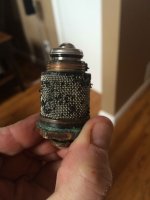With no flow you are going to measure line pressure.
If the regulator has even a very small leak, pretty common as they age, the pressure after the regulator is going to again be full line pressure with no flow.
The test I would do is to put the gauge on the hose spigot and then go turn the shower on full force. See what happens to the pressure under that condition.
* * * * *
It is not obvious to me why you would even need a pressure regulator if the service entrance pressure is only 44 psi. And, a pressure regulator can be a very significant flow obstruction.
But, before you do anything else, a diagram showing where the service entrance , the spigot, the regulator and the rest of the plumbing is would be very helpful. It does not have to be to scale, just show the way the pipes are connected. If you can't draw one on your computer, draw one on a piece of paper, take a picture of it and post that.
If I am remembering this correctly, you said the spigot where you are measuring pressure is before the regulator. If that is correct, there is a simple, inexpensive test which will show whether your major restriction is between the main line, or in the pressure regulator.
Get one of those Y-shaped splitters which allow you to connect two hoses to one spigot. Put it on the spigot and put the pressure gauge on one arm of the Y. Put a garden hose with an adjustable nozzle on the other arm of the Y, not just the nozzle, you really need the hose also. Then get a bucket and with the nozzle of the hose opened enough to produce fairly slow flow, measure the flow rate by timing how long it takes to fill the bucket (most buckets have marks showing volume at various levels). Write dow the flow rate and the pressure. Then open up the nozzle some more and time a higher flow rate, again measuring pressure. Do this 3 or 4 times at different flow rates, and plot pressure vs. flow rate.
From this article
The Average Shower Head Flow | eHow it looks like you need about 1.5 gpm at 45 psi for a decent shower. If you have less pressure than that at the entrance with a flow rate of 1.5 gpm in the hose get back to us with the flow rate vs. pressure curve you have.

